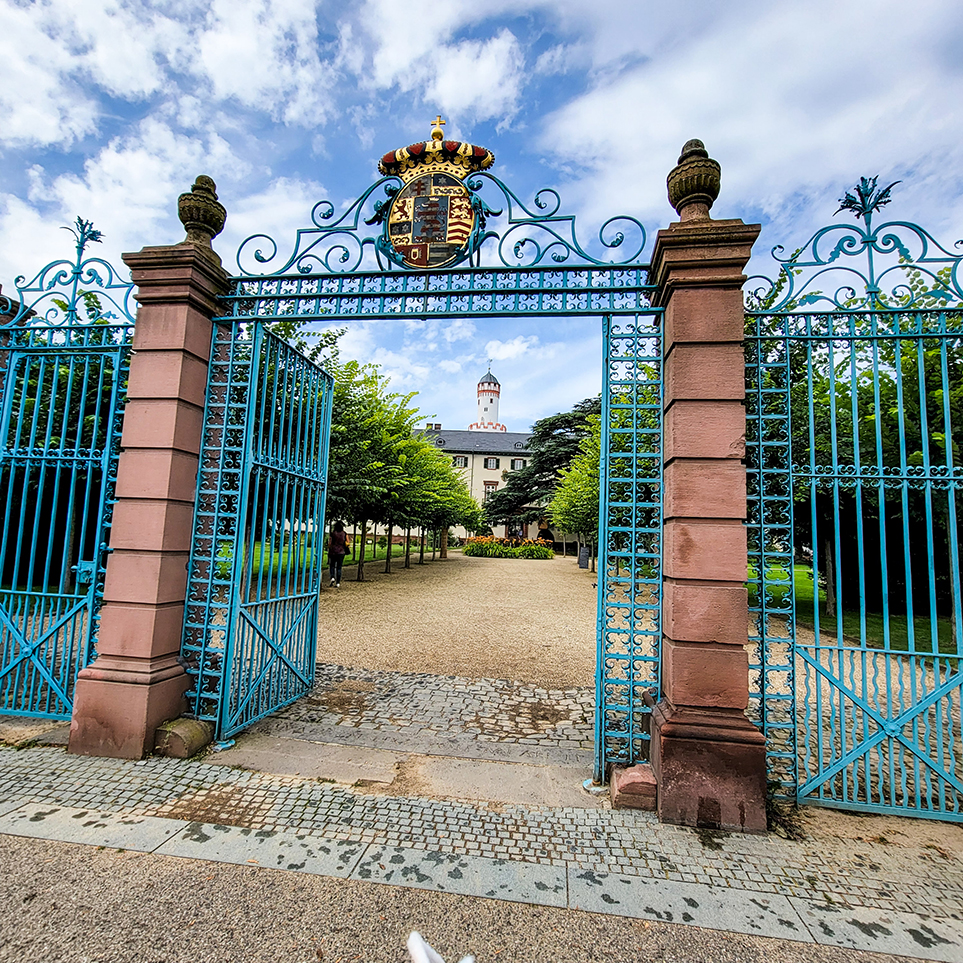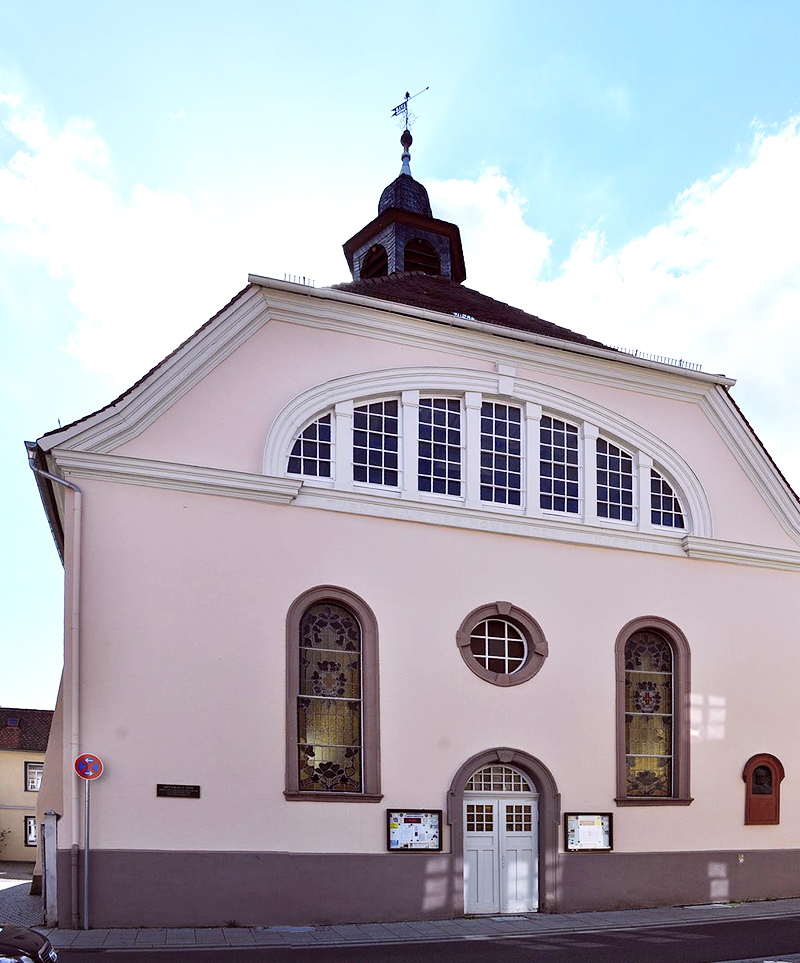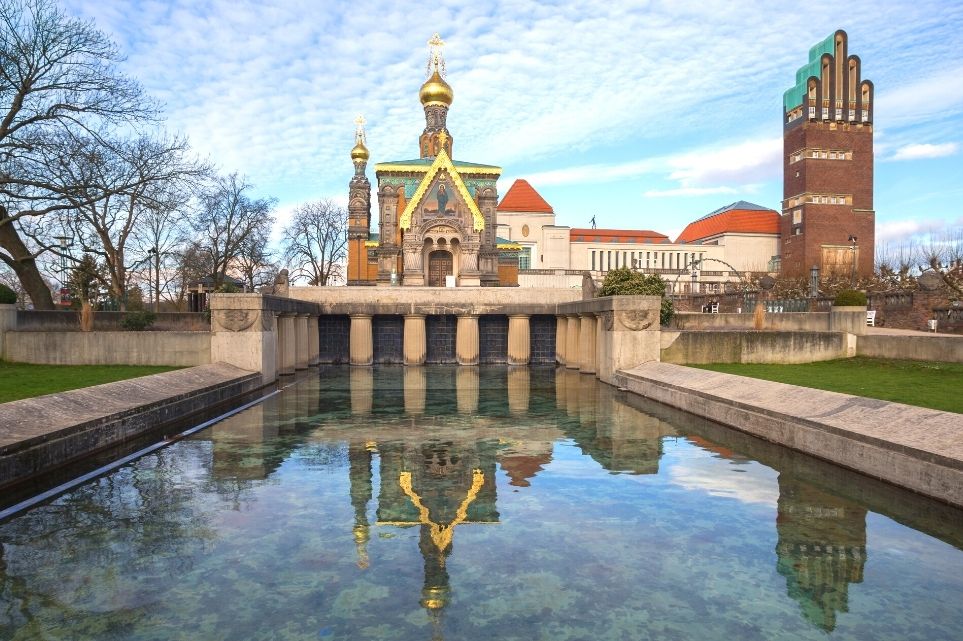
During our two-week visit to Frankfurt, Germany, we made several daytrips to several neighboring small towns. Bad Homburg is one of the towns nearby that we really enjoyed. You can easily spend one full day in Bad Homburg strolling through the gardens, exploring the castles, shopping the boutiques, and enjoying its many restaurants and cafes.
Bad Homburg is an adorable quiet town where you can find many parks and the utterly fascinating Bad Homburg Castle.
In the early 20th century, this spa town attracted visitors from all over the world, because all the royals and wealthy visitors adopted a motto Champagnerift und Tradition (meaning “champagne air and tradition”). One example is the gorgeous pavilion gifted by the Thai King for his love of the gardens.
Bad Homburg is the origin of the homburg hat which is well known worldwide. However, historians are not quite sure where the homburg hat originated. It gained popularity after the king of England returned home from a visit to Germany in the 1890s, wearing the unique hat on his head. It was a new hat design that had never been seen in England. Since Edward VII had visited the famous Bad Homburg, the “Homburg” hat was named.
You will find very little information about this German town, but it is well worth a day trip to visit the attractions listed below.

SIGHTSEEING
English Church (The English Church Cultural Center)
It was built at the request of numerous British spa visitors who wanted their own church. One of the descendants of the Landgrave’s built the church in 1868. From 1914 onwards, the church served as a museum and concert hall before it was converted into a cultural center in 1990.
The day we visited; a local art exhibit was being hosted. Several artists were present to visit and learn about their art. It is a lovely venue to check out.


Dorotheenstraße (Dorotheen Street)
Dorotheenstraße (Dorotheen Street) is a great place to start due to the many historic buildings. Begin at the eastern end of the street and walk towards the Hölderlinhaus. The German poet Friedrich Hölderlin lived here for two years in the 18th century. Today, it houses an apartment that the city of Bad Homburg gives out for free to researchers who want to study Hölderlin and his works.
Next down the street is Marienkirche (St. Mary’s Church). The altar and the stained glass windows were incredible to see.
The second church is the Jakobskirche (St. Jacob’s Church), a French-Reformist church built in 1724 but was later secularized. In the early 20th century, it was converted into a gym.
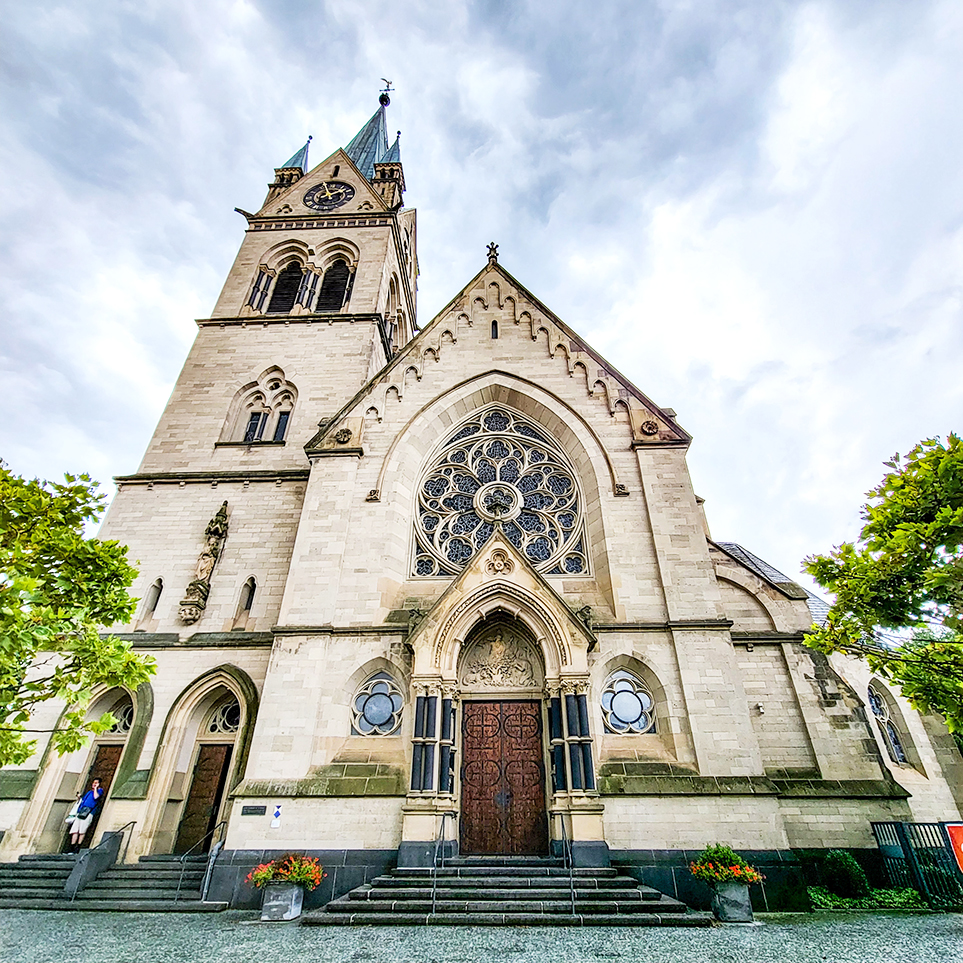
St. Mary's Church
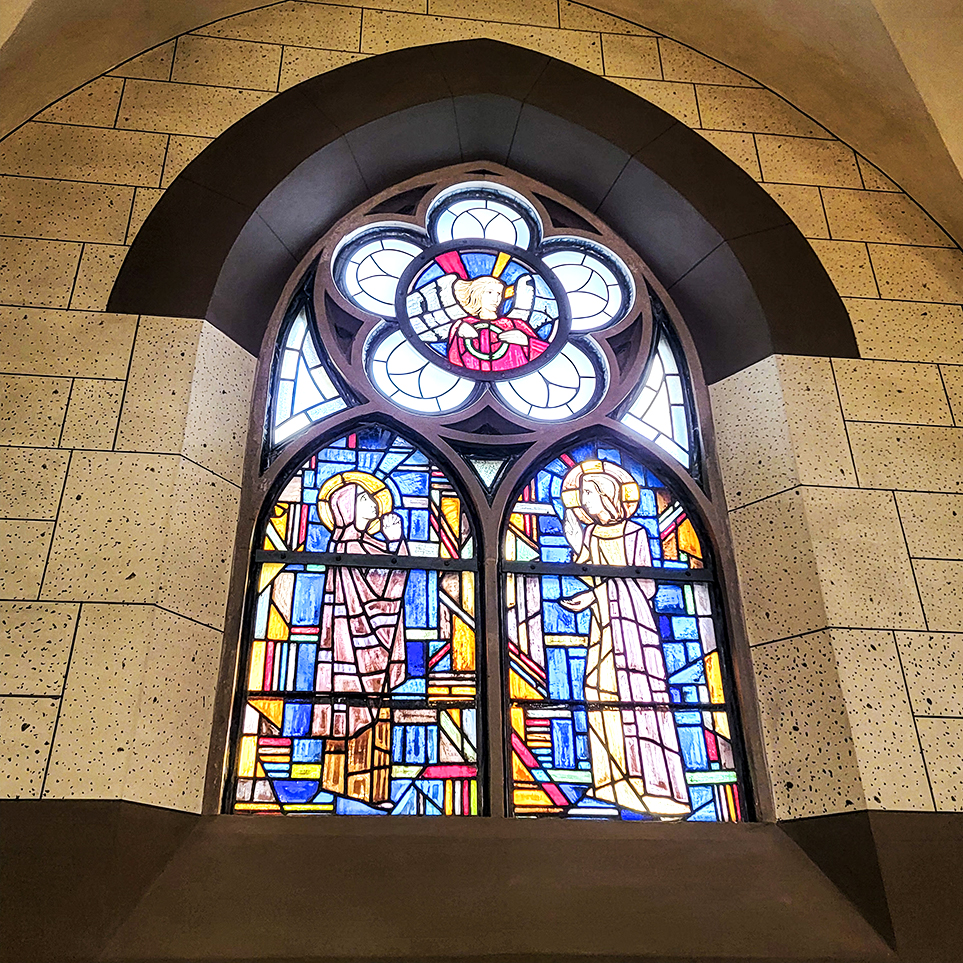
St. Mary's Church
Church of the Redeemer
At the end of Dorotheenstraße, you will find the Church of the Redeemer (Erlöserkirche). It is known as the “Hagia Sophia of Bad Homburg” because of the marble ceiling and the golden mosaics. It is the main Protestant church in Bad Homburg. Make sure to get close and examine the cross at the altar. Quite impressive artistry throughout the church.
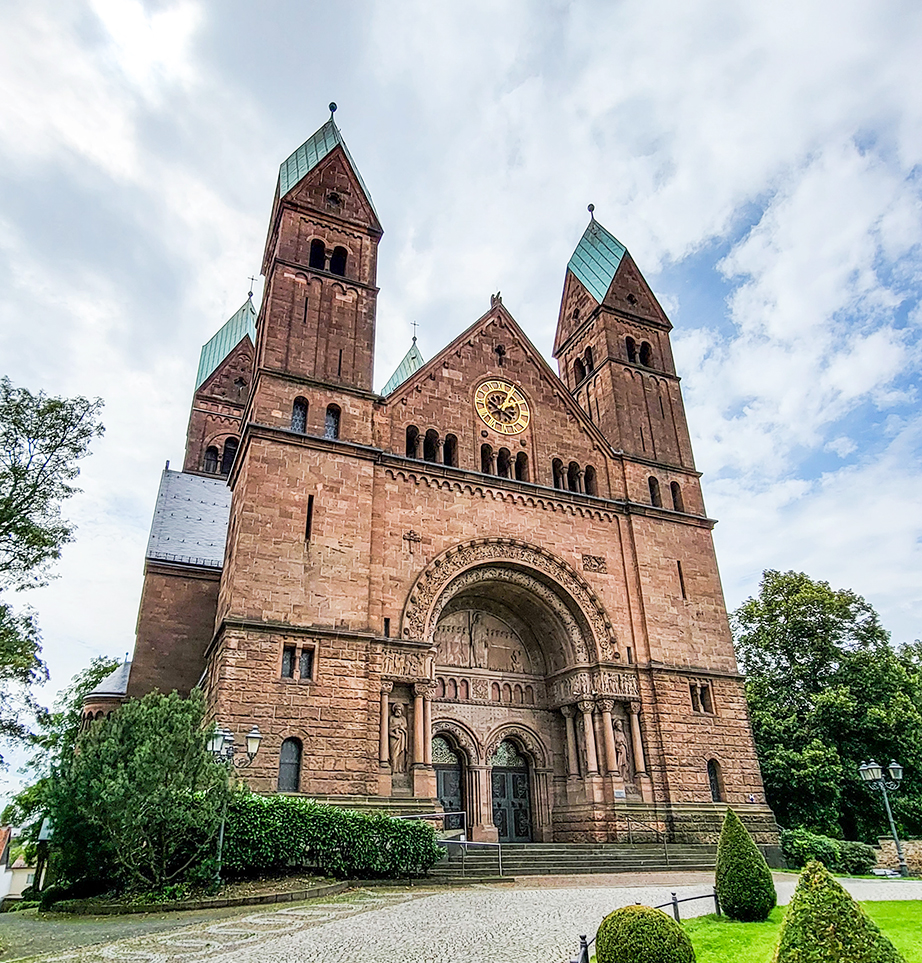
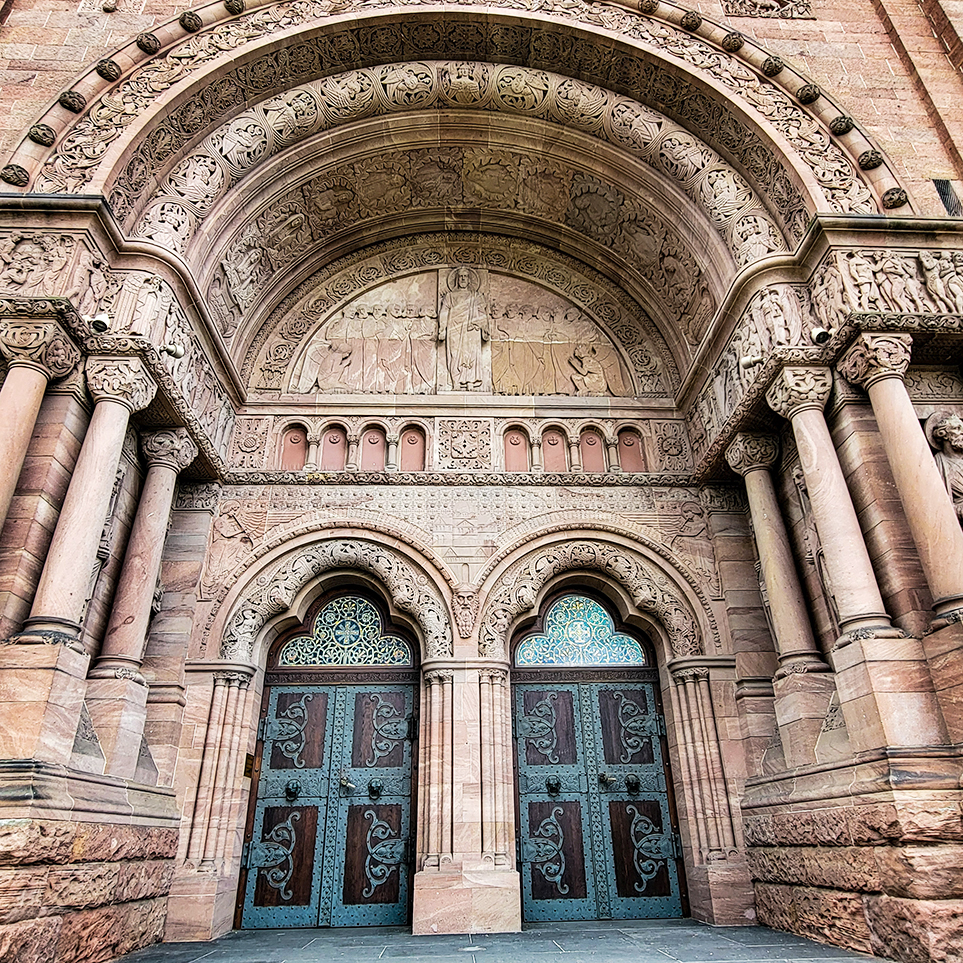
Landgraves’ Castle (Schloss Bad Homburg)
Next to the Church of the Redeemer, you can find an entrance to the Landgraves’ Castle and Park. From here, you can go straight through into the castle.
We recommend you stroll through this beautiful garden of citrus trees and flowers. Visit the greenhouses and admire the different plants on display. The giant trees must be hundreds of years old stunning.
Once you have finished wandering through the gardens, enter the castle. You can join a tour but need to make reservations ahead. Unfortunately, we did not have a reservation but walked around to the promenade deck and climbed the White Tower. From here, you can get a fantastic view of the grounds below.
Landgrave Friedrich II built the castle in 1680 and was the first neo-Baroque residence. The White Tower is the remains of the medieval Hohenberg from the 14th century, as the rest was torn down to build the castle.
The Landgrave’s resided at the castle until 1866. When the dynasty died, German Emperors took it over, refurbished, and used it as their summer home.
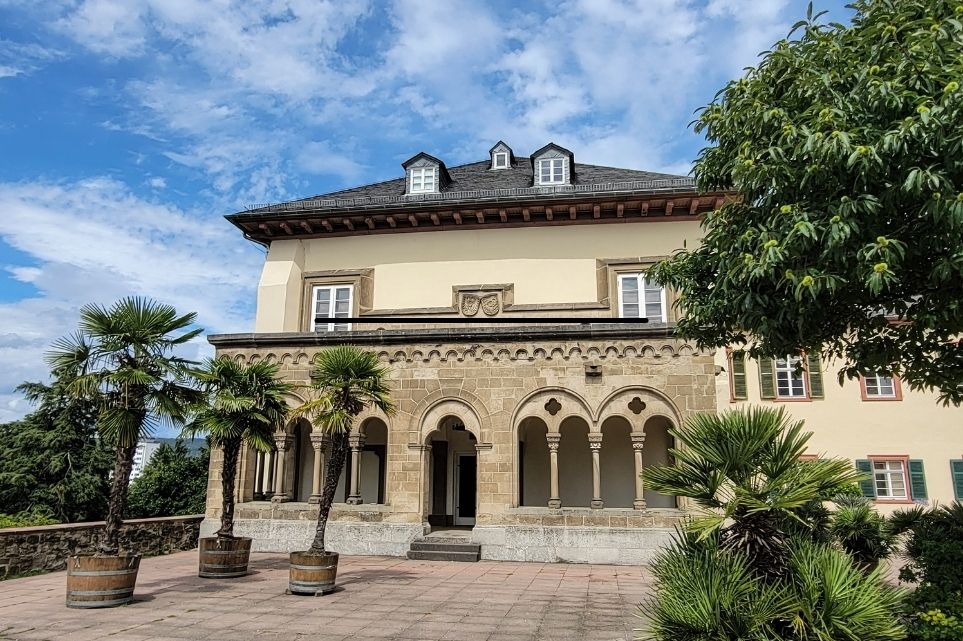
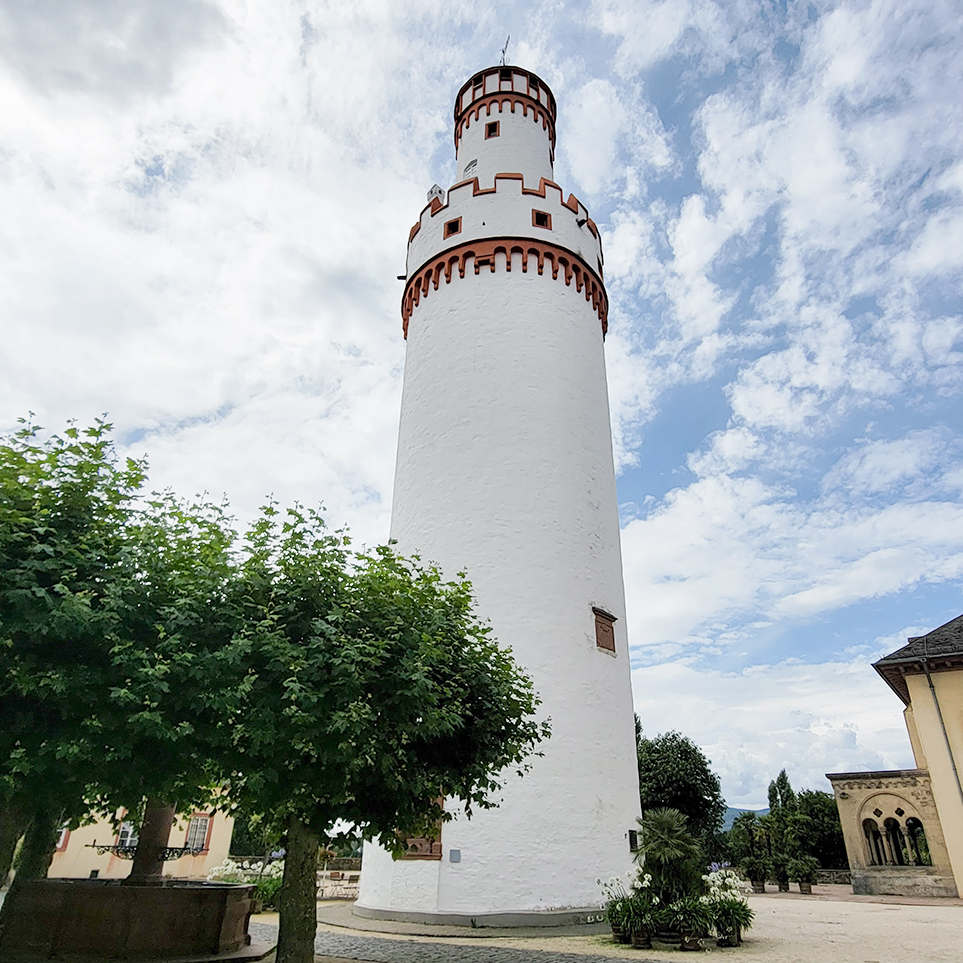
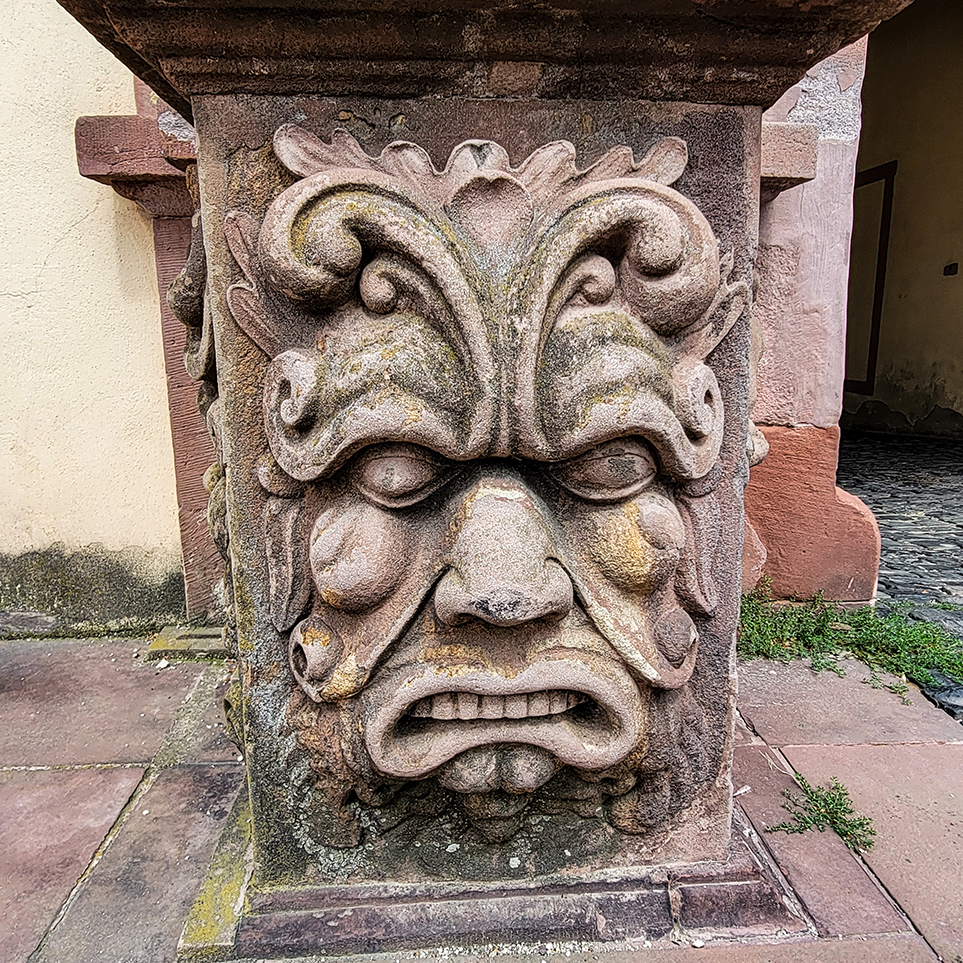
Landgraves’ Castle Park
As you stand near the White Tower courtyard, you can see Castle Park. After exploring the castle, take a walk down into the gardens. This part of Castle Park is a formal Baroque Garden bordering the Orangeries. In addition, near the foot of the hill is an English-style landscaped park, a small lake to enjoy and relax while visiting the castle. Directions can be found here.
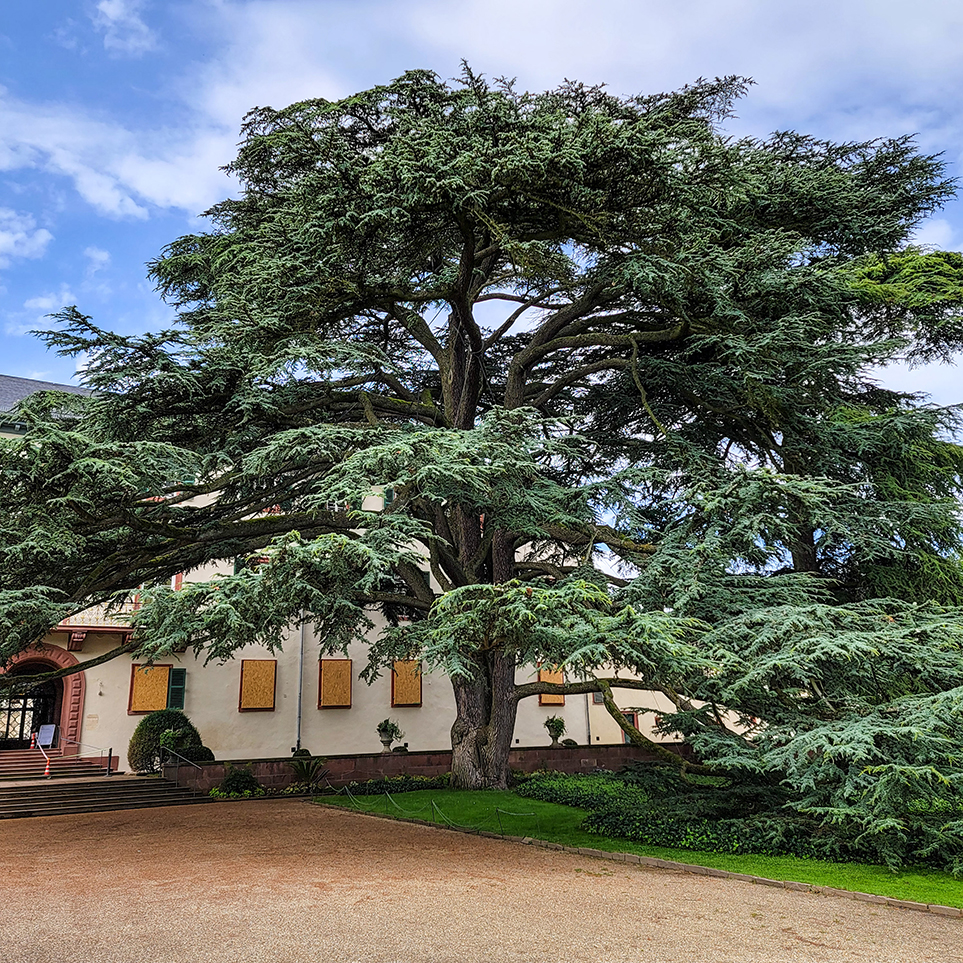
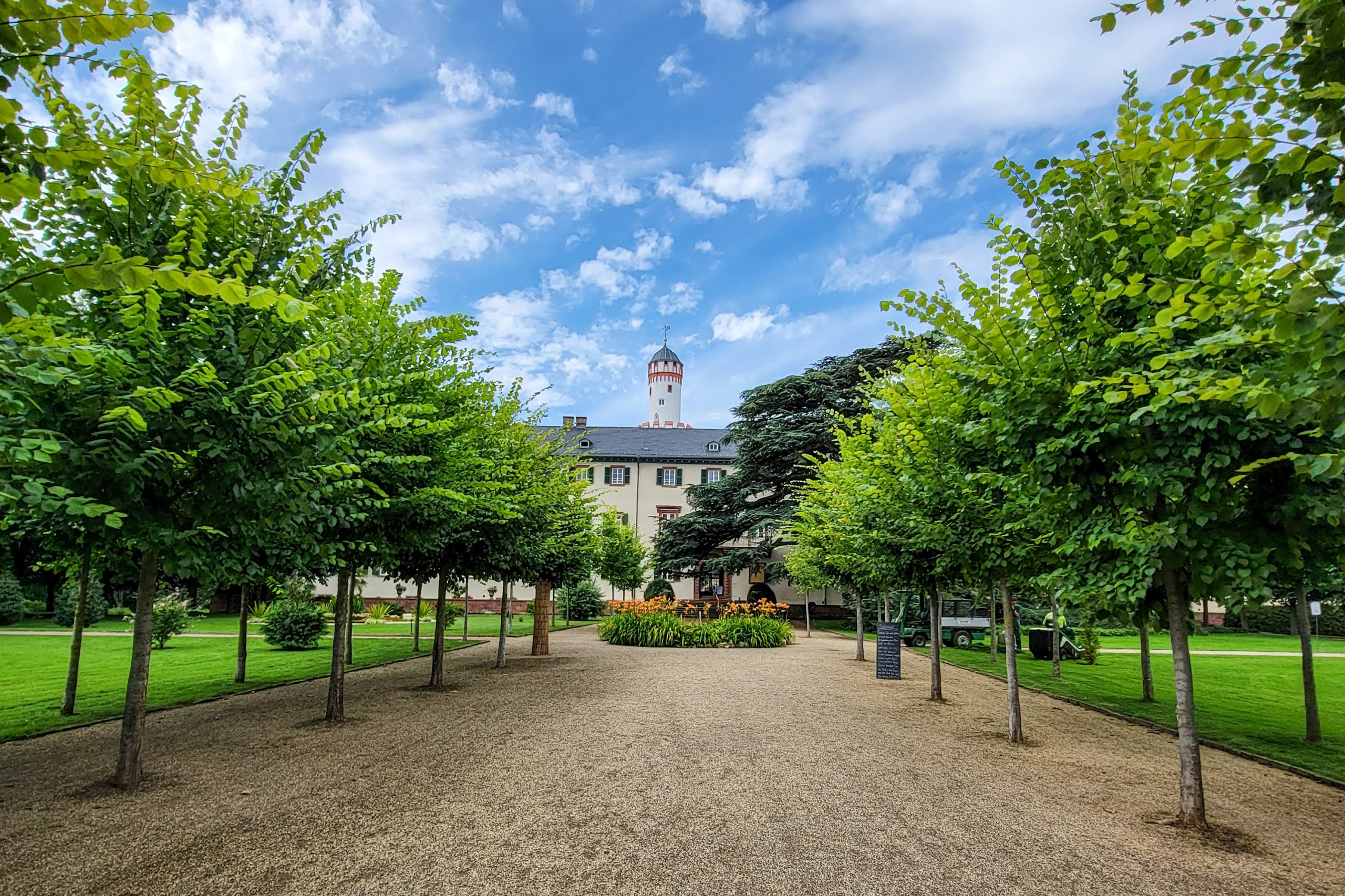
Hexenturm
Hexenturm translates to “Witch Tower,” but no witches lived here. Instead, these towers were used to incarcerate prisoners. The original name was Hessenturm (Tower of Hesse), but it eventually changed into today’s name.
From the bridge, you can see the traditional German architecture. This area is an excellent place to stroll and enjoy some old traditional-style buildings.
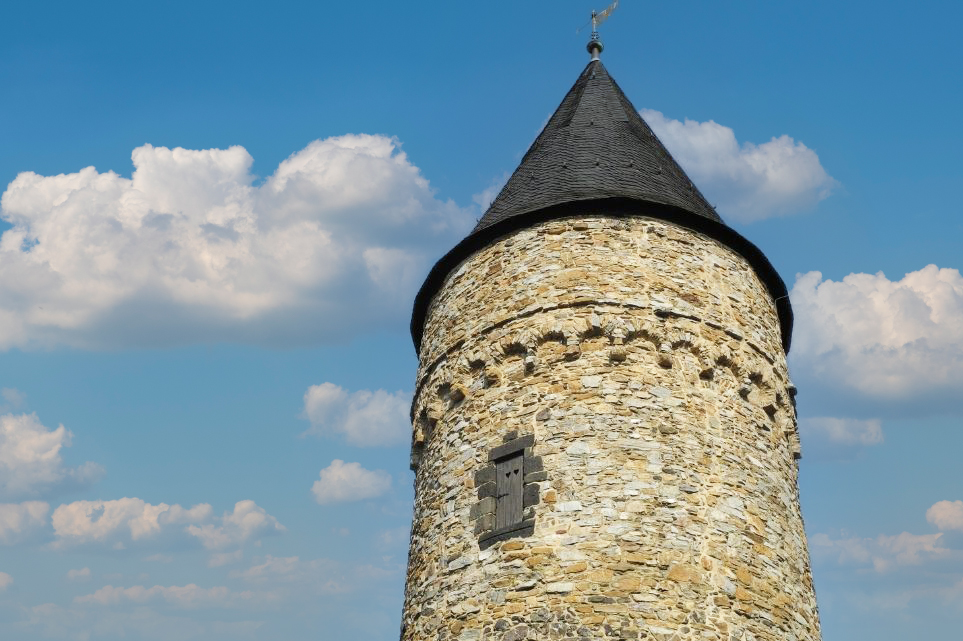
Haus der Altstadt and the Old Town
Here, in Old Town, you will see lots of half-timbered houses. The oldest one dates back to 1505, and they are as crooked and charmingly “German” as you’d expect them to be! But, over the past decades, a massive restoration project saved them from collapse. This renovation project lasted until 2005.


Louisenstraße
Louisenstraße (Louisen Street) is a pedestrian-only street, lined with shops and restaurants. This street is the heart of the town. Louisenstraße is a great place to grab a bite to eat and people-watch.
Since Louisenstraße is the town’s main artery, you will find weekly entertainment and markets taking place. In addition, the Wine Festival fills the streets with vendors, street carts, and wine samples to enjoy in May.
A building worth discussing is the Martlauben, a decorative half-timbered house at the market square. Another attractive building to visit is the former post office. It is the only surviving structure after the bomb attacks during WWII.
My husband spent much of his time here window shopping and eating ice cream.



Kurpark
Parks are always a nice place to visit, but many times when traveling we don’t take the time to explore due to all the other sightseeing on our list. In Bad Homburg, I highly recommend visiting Kurpark, which means “spa park.”
The Kurpark is nearly 40 hectares and is designed as an English landscape park, lush lawn areas, and shady trees shaped with thick shrubbery avenues, creating pathways and a small lake. It is one of the only remaining parks, designed by Peter Joseph Lenné, that remains in the original form.
Within the park is the Kaiser-Wilhelms-Bad, once used as a public spa. Emperor Wilhelm I had his own private bathing area in the building. Today, it is called Kur Royal Day Spa. If you plan to spend more than one day here, make sure to enjoy the wellness and relaxing experience at the spa.
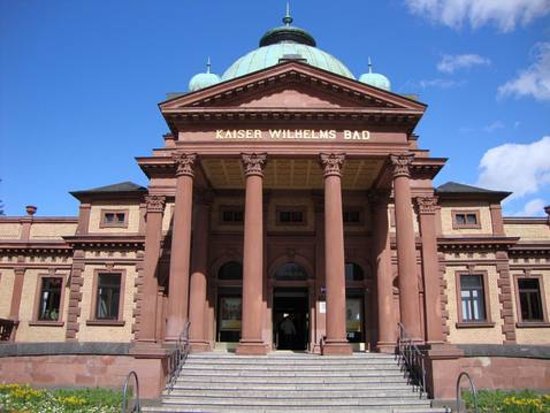

Royal families have visited Bad Homburg for their thermal spas and casinos throughout history. Many of these royals left behind gifts such as a Buddhist Temple or a Russian Orthodox Church, which you can see while visiting the park. King Chulalongkorn of Siam gifted one of the Thai Salas when he visited Bad Homburg in 1907.
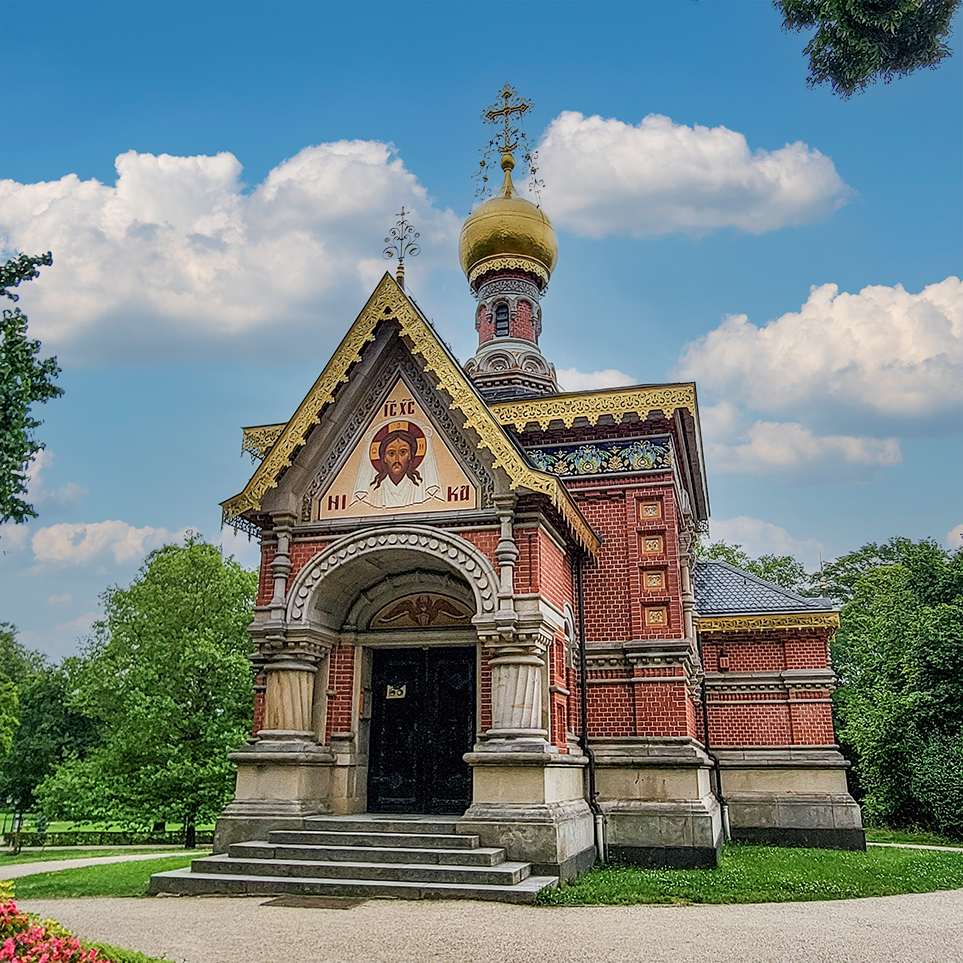
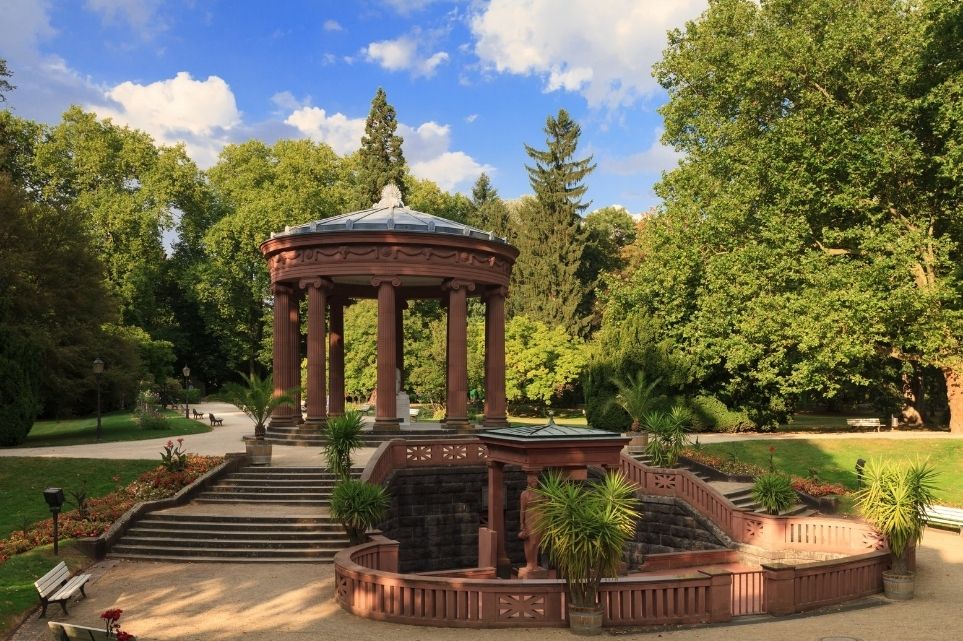
The Elisabethenbrunnen is the biggest and most beautiful fountain in Bad Homburg. On top of this well, you can see a temple with the statue of the Greek goddess of Health, Hygeia.

Located in the center of the park is the Spielbank Bad Homburg Casino. It is one of the oldest and most famous casinos in Europe, founded in 1841. Today, the casino is one of the top five in Germany and is also one of the most successful casinos worldwide.
The Kurpark is extensive, and you can spend a long time strolling around the gardens and will give you some highlights of what you will see.

HELPFUL TIPS
Getting to Bad Homburg
You can quickly get to Bad Homburg by train from Frankfurt. Take the train S5 from Konstablerwache or Hauptbahnhof and get off at the stop “Bad Homburg v.d.H. Bahnhof”. Trains are frequent, and you can check the schedule online.
Getting around
Bad Homburg is small enough that you can walk everywhere.
When to visit Bad Homburg
Bad Homburg offers something to see and do no matter the time of year!
Hours and Admissions
- Kur Royal Day Spa is open from Monday – Sunday from 10:00 am – 10:00 pm. Pampering Services range from 25-45 EUR. Group tickets are available. Check the website for more details.
- The Church of the Redeemer is open every day except Mondays, in winter: 12:00 – 16:00, and in the summer: 10:00 -17:00
- To book your tour at Landgrave Castle, visit their website.
- The Spielbank Bad Homburg Casino and Restaurant is only open to those fully vaccinated. The lounge remains closed to COVID-19. Classic games are open from Sun. -Thur. 14:30-3:00 and Fri. – Sat. 14:30 – 4:00. Slot machine games are open daily from 12:00 – 4:00, and restaurant is open daily from 18:00.
- Taunus Therme is another indoor and outdoor thermal spa with Asian-inspired designs that includes a bar/restaurant. Hours are from 9:00 – 22:00
- The English Church Cultural Center has different exhibits throughout the year. Contact them directly for more details: kultur@bad-homburg.de
Enjoy your travels! Please read my blogs about other exciting places around the world at Traveling Lens Photography.
If you want to read more follow me on Facebook, Instagram, or Pinterest as I share my journey.
Happy Travels!




